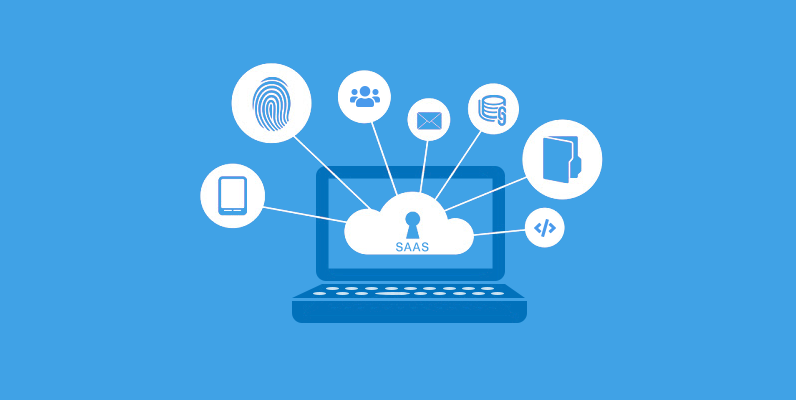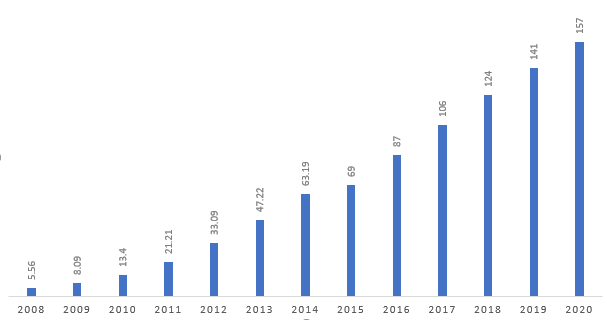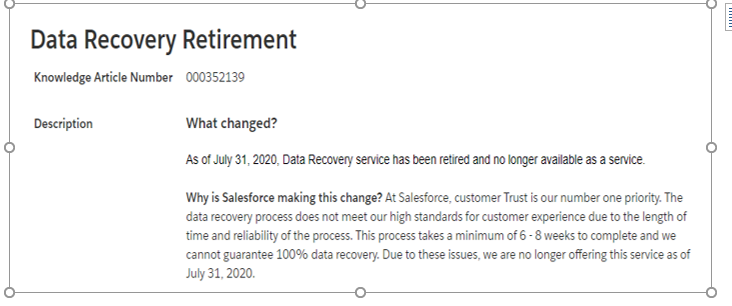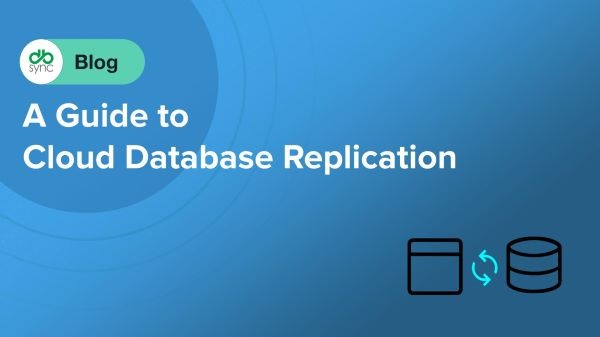Reasons to Protect Your SaaS Data

The Software-as-a-Service (SaaS) industry continues to grow in leaps and bounds — predictions suggesting that the market could grow to $157 billion in 2020.

SAAS MARKET GROWTH (BILLION U.S. DOLLAR)
“Software as a Service (SaaS) Market Worldwide 2008-2020.” Statista, https://www.statista.com/statistics/510333/worldwide-public-cloud-software-as-a-service/.
While SaaS empowers companies to move smarter and faster at affordable prices, it also leaves data prone to cyber-attacks that could result in lost data.
Is Your Data Safe?
Estimates suggest that at least 80% of businesses using SaaS have lost their data at some point. It’s expected that by 2021, 3 out of 4 companies will use SaaS to power up their critical applications — these numbers are symbolic of the growing need to protect Saas data.
Many SaaS vendors don’t provide protection for your data — Salesforce, Microsoft and Google all provide limited (or no) support for data recovery, as evidenced in their company statements:
1. Salesforce no longer to provide data recovery

2. Microsoft Services Agreement claims no liability for any disruptions or losses

Microsoft Services Agreement. (n.d.). Retrieved October 19, 2020,
from https://www.microsoft.com/en-in/servicesagreement/
3. Google claims no recovery if customers delete the data
Data Processing and Security Terms (Customers). (n.d.). Google Cloud. Retrieved October 20, 2020, from https://cloud.google.com/terms/data-processing-terms

How Can You Lose Data?
There are many ways in which a data loss incident can torpify your business.
1.Human Errors
Inevitably, the biggest cause of data loss is a human error — as high as 64%, according to some estimates. The figures and example below illustrate the threat:

Source: Aberdeen group


The benefit of a replication solution is that it can help you compare your data before and after errors are noticed and see all of the changes that have been made. Thus, you can quickly check mistakes and rectify them, recovering all lost data. Replication is used for data recovery to ensure accurate and adequate security exists to ward against system breaches or software/hardware failure where data is compromised.
2. Hackers
As noted earlier, the SaaS market is forecasted to see $157 billion in revenue in 2020 — these numbers have caught the interest of hackers, as illustrated below by the Chartered Professional Accountants of Canada (CPA) incident below:
| The CPA disclosed that a cyberattack against its website allowed unauthorized third parties to access the personal information of over 329,000 members and other stakeholders. |

CPA Canada discloses data breach affecting 329,000 individuals. (n.d.). BleepingComputer. Retrieved September 8, 2020,
from https://www.bleepingcomputer.com/news/security/cpa-canada-discloses-data-breach-affecting-329-000-individuals/
Archiving your data with Cloud Replication helps you comply with regulations and requirements. The “snapshot-based tracking” can help you to maintain data compliance regulations.
3.System failure
Just as humans are prone to errors, so are systems. While machines can greatly reduce the risk of individual human error, data can still be compromised/corrupted without warning, potentially leading to all your vital data vanishing at once. The consequences are beyond imagination!
Data replication software lets you store your data on multiple sites or nodes which increases the availability of data even in adverse situations like system failure. By moving your data to different sources, you can make sure that your data is continuously available. Thus, even in a “system crash” scenario, you will have access to all of your relevant data and can keep going.
Backup vs Replication
Backups copy and restore data to ensure original data is not lost in the case of human/system error. Even if backups are run hourly, they cannot ensure the continuity of business at a time of data loss, as it may take hours, even days, to recover the data because it is stored offsite.
Replication copies and moves data to different sources/sites, making recovery faster, as data is retrieved quickly and at a granular level, allowing organizations to back on track in half of the time or less than backup solutions.
Because we live in an increasingly data-centric world, businesses cannot afford to compromise on the availability of data nor the level of security required to protect it. Today’s business model requires an “always-on” level of service which cannot be delivered by a backup solution.
What Exactly is Replication?
Data replication is the process of keeping data at different locations, creating multiple copies of it that can be stored at various sources to make certain it is protected from loss or theft. Replication increases the accessibility of data by giving access to all users at the same time, irrespective of their location.
Depending on need, replication can be done once or on an ongoing basis. The dynamic nature of data necessitates flexibility and convenience, making replication even more vital in today’s business world where information must be shared instantly and globally to multiple audiences.
Types of Data Replication
- Transactional replication
In a transactional replication, the software makes a complete copy of the original data and updates it as it changes. Data is replicated in real time from its origin to the receiver database. This type of replication guarantees transactional consistency. This is most significant as the number of rows copied each time is smaller.
- Snapshot replication
When the snapshot replication method is used, data is replicated exactly as it appears originally and is not monitored for updates. The entire snapshot is generated and sent to the user. This method is generally preferred when data changes only occasionally, because it requires the slower process of moving multiple records from one end to the other.
- Merge Replication
Merge replication allows publisher and subscriber to change data dynamically. It is the most complex form of replication as data from two or more databases is merged together to form one database. It allows users to send changes from publisher to multiple subscribers.
- Key-based Incremental Replication
This type of replication is also referred to as “key-based data capture,” as it only copies data changed from the last update. In this method, keys can be seen as elements that exist within the database and trigger data replication. Only a few rows are copied at a time, which makes it the most cost-effective replication method of all.
Advantages of Data Replication
Replication not only protects your data from a variety of threats but also provides a number of advantages:
- Better
Reliability and Availability: Since data is present at different locations, if one system fails,
data can easily be recovered from another location. - Lower Data
Access Latency: As data is available at
multiple locations, the required data can be accessed from a closer location to
where the transaction is being executed. - Power Analytic
Support: Making data from different sources available to a data warehouse
empowers different teams to work together on a common project for business
intelligence. - Enhance Test
System Performance: Because replication simplifies the
synchronization and distribution of data, it creates quick access to data for
testing, which allows for faster decision making.
What We Do at DBSync
At DBSync, we provide you with a simple and cost-effective way to replicate your Salesforce data. Our cloud replication can automatically create Salesforce object schemas, replicate objects in real-time, and create or update Salesforce records from your database irrespective of platforms like AWS, Windows, Azure, Docker, or Linux. Further, our product:
- Fulfills All Compliance and Security Requirements
Archiving your cloud application data with Cloud Replication helps you comply with FINRA and other regulations/requirements. Snapshot-based tracking means you stay on top of the latest regulatory requirements (i.e. versioning). - Requires Zero Administration – Set It and Forget It
Automatic schema creation and adjustment means zero effort on mapping schemas. The ability to run database queries on Salesforce data reduces API usage and query latency. - It is Easy to Use
No API experience? No Problem! Download the data directly and manipulate it from the database to see updates right in your CRM.
- Can Be Deployed and Run Anywhere
Support for the cloud (AWS) and on-premise database backup (Oracle, SQL Server, MySQL, Snowflake, etc), allows you to use data replication software in batches or in real-time increments. - Allows for Adoption of Salesforce With Your AWS and Big Data
Cloud Replication’s support for Cassandra, Amazon Redshift, MongoDB, and S3 helps you to harness the power of Big Data for your business.
Conclusion
It is easy to see the valuable impact SaaS has and continues to have, on the way we currently do business. However, as shown, this brings with it the increased risk of data loss — either by employee error, system failure, or malicious intent — that can hamper the flow and productivity of any business. The best defense: DBsync’s Cloud Replication tool. Be safe, not sorry! Arm yourself against data loss and sleep soundly at night knowing you are well-protected.
We would be delighted to discuss your use case and explore how DBSync can support your success. Please feel free to Schedule a meeting with us.
